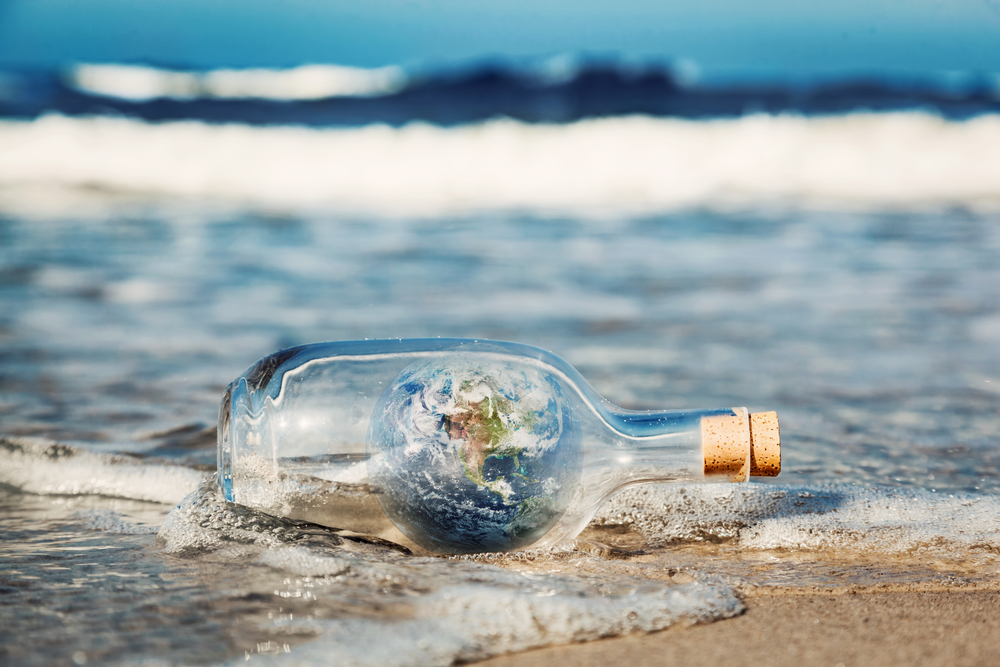Take These Challenges to Help Save Our Oceans!
Plastics have become public enemy number one. This year, environmental groups GreenSeas Trust and Greenpeace have joined forces with the IET to engineer creative solutions to two specific parts of the problem.
While the consequences of plastic pollution are becoming obvious, so are the causes. Eighty per cent of marine litter originates from land, with only 9 per cent of plastic currently being recycled globally. Every year, somewhere in the region of 12 million tonnes of plastic enters the oceans. Single-use plastic and cigarette butts are the biggest threat to oceans and marine life.
This is an opportunity for innovative young engineers (age 18-35) to ‘Save our Seas’. Mike Carr, IET president, says: “This competition is all about giving young engineers a platform to highlight their innovations. By shining a light on a particular problem we’ve found that engineers think outside the box and come up with solutions. Previous winners of this challenge have gone on to see their innovations become a reality, so this is a great way to solve a real-world challenge.”
The first of these two challenges concerns the astounding number – estimated at four trillion – of cigarette butts in the oceans. Cigarette filters are made of cellulose acetate fibres, each approximately 20μm in diameter. Each cigarette butt can release thousands of these tiny fibres into the marine environment, along with 200 toxic chemicals.
Today, cigarette butts are the number-one item found in beach clean ups, but they’re not simple items to remove from the ecosystem. Most beach-cleaning machines are only capable of removing rubbish of a certain size. The challenge is to develop a device that can better search out and remove cigarette butts, as well as other small marine contaminants that are currently found on our beaches.
Fazilette Khan, founder trustee, GreenSeas Trust, says: “As an engineer myself, who came into the profession when there were very few women in this field and where the attitude toward engineering was ‘boffins only need apply’, it is great to see an increase in young engineers and to inspire these young minds to solve one of the biggest problems facing the planet – not only for their own generation, but the ones to come.”
Right now up to 12.7 million tonnes of plastic – everything from plastic bottles and bags to microbeads – end up in our oceans each year. With just 9 per cent of plastic currently being recycled globally, it’s clear that recycling alone cannot fix the problem. We need to reduce single-use plastic packaging at source. We are already seeing companies around the world take action to eliminate unnecessary single-use items like straws, stirrers and bags.
However, many of the food products and household goods on sale in our supermarkets and stores are still covered with throwaway single-use plastic. This challenge is to find innovative ways of reducing or removing the need for plastic packaging using clever design.
Louise Edge, head of Greenpeace UK’s ocean plastics campaign, says: “It’s so important for our next generation of innovators to work towards protecting and preserving our planet and it is fitting that the theme of this year’s IET Global Challenge is ‘Save Our Seas’.
“We really look forward to seeing applicants’ ideas for how we can design throwaway plastic out of our lives and consign the phrase ‘single use’ to history.”
The winning teams from both challenges will receive a £500 cash prize, a trophy and an all-expenses-paid trip to attend the IET’s prestigious Innovation Awards ceremony in London, where their winning solution will be revealed to the audience.
For more information, visit www.theiet.org/global-challenge and follow the challenge on social media: #IETSaveOurSeas.
The closing date for entries is 14 March 2019.
Challenge 1: The GreenSeas Trust challenge
The task: to create a remotely controlled, all-terrain machine that is capable of moving up and down the beach for a reasonable length of time, picking up cigarette butts from the surface of the sand and collecting them in a chamber or hopper.
GreenSeas Trust believes changing human behaviour is also key to stopping plastics getting into the sea. Therefore, the machine should attract the eye by using its size, colour or lights to grab the attention of beachgoers and help to educate them about the problem of people burying their cigarette butts in the sand.
The device should ideally be:
■ Solar powered, allowing it work over extensive periods of time.
■ Sand, salt and water resistant.
■ Small, agile and intelligent enough to manoeuvre around obstacles on the beach (people, towels etc).
■ Big enough and bright enough to attract attention and help educate beachgoers.
Challenge 2: The Greenpeace plastic packaging challenge
The aim is to reduce packaging, eliminate single-use plastic packaging by 2025 and introduce more reusable packaging formats.
This challenge is not about exploring alternative single-use packaging materials. It concerns reusable packaging designs or new approaches that enable supermarkets to dramatically reduce the need for packaging in the first place.
You may choose to focus on redesigning packaging for one class of product such as, for example, fruit and vegetables, household cleaning products or toiletries, or to focus on a specific product.

